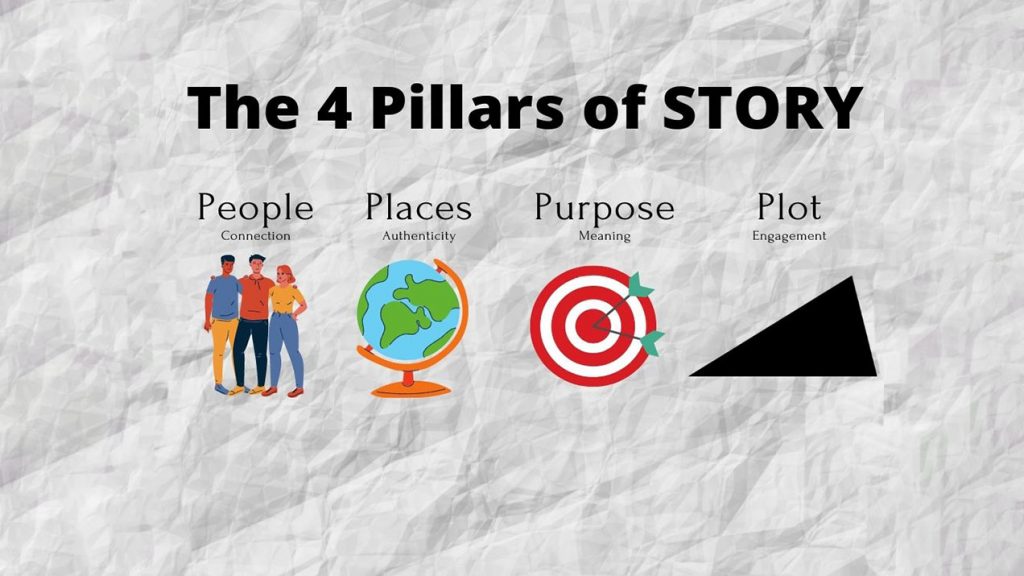Discover the power of storytelling in your B2B communications
We know storytelling mainly from B2C marketing, but it is also becoming increasingly important in industrial marketing. Through stories, we learn not only faster but also more long-term. So the idea is to convey facts and information via involving stories that pick up your customers and lead in an emotional and exciting way.
But how does storytelling actually work and how can you use it to convince potential customers?
What is storytelling and what is its function in B2B?
In storytelling, products and services are not simply described: they are made tangible in the form of a story and facts become “easier to digest”. However, storytelling is often perceived too strongly from a B2C perspective, where little stories are told with colorful TV commercials or YouTube videos, which often doesn’t work like that in the B2B sector.
In addition, usually, only aspects of a product or service are shown without making a connection to the core of the company.
So how do you use storytelling in B2B to get the strongest impact?
Your story supports your entire communication and ideally already manifests itself in the company’s motto or slogan. From there, spread the story out to all media and channels. Testimonials are particularly well-suited. They are often used, as they are an important source of information for many decision-makers in B2B companies.
If you package the key content in an appealing story, you can stand out from your competitors - and you immediately have the Hero of your story:
the satisfied customer.
What you learned about stories in class generally applies to the implementation:
Challenge
There must be a challenge that makes your story relevant and, in the best case, presents a situation that many of your potential customers can identify with.
Protagonist
If possible, let your employees or your customers speak; this will make your story especially authentic.
Visuals
The more appealing the presentation, the better. Different media (images, videos, text, etc.) can be used to present your stories in a creative and varied way.
The more sophisticated the products and services, the more demanding it is to develop a good story, e.g. for a reference report.
So take enough time to find topics and prepare your stories. It is important that you ask yourself the right questions and answers them as accurately as possible.

Whom do you want to address?
Define the target groups you want to address.
- What do they need?
- What are the needs of these target groups?
- What do you want to tell them?
- What solutions and added value can you offer them?
- Who can be the hero of the story?
- Rather a customer or an employee?
- What is the best way to package the story?
Define the tone and media through which you want to tell the story. The media depends on your target audience as well as the content.
- How does the story pay off your brand essence?
- Make sure you don’t lose sight of the big picture: Every story should tell what your company stands for. Your WHY?
But how does storytelling actually work and how can you use it to convince potential customers?
Storytelling is a powerful tool for convincing potential customers because it helps to engage the audience and create a connection with them. By using storytelling, you can communicate your message in a way that is relatable and memorable, making it more likely that your audience will be convinced by what you have to say.
Here are a few tips for using storytelling to convince potential customers:
Start with a hook. This is a short, attention-grabbing statement or idea that will grab the audience’s attention and make them want to continue listening.
Use characters. By creating characters that the audience can relate to, you can make your story more relatable and engaging.
Use conflict. Conflict is a natural part of any story, and it can help to keep the audience engaged and invested in the story.
Use descriptive language. By using vivid, descriptive language, you can help the audience to visualize the events of the story and feel more connected to it.
Use emotional appeals. Emotional appeals can be very effective in convincing people, so try to include emotional elements in your story to help persuade the audience.
Overall, the key to using storytelling to convince potential customers is to create a compelling, relatable story that will engage the audience and create a connection with them. By using these techniques, you can help to persuade your audience and convince them to take the desired action.








